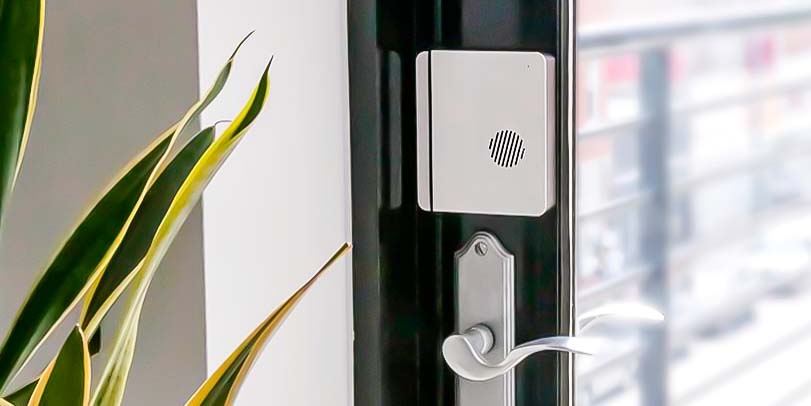Tom's Guide Verdict
A simple to use system that you install yourself, but missing some vital components.
Pros
- +
Easy to self install
- +
Built-in battery & cellular backup
- +
Works with Amazon Alexa, Google Assistant
Cons
- -
No outdoor camera yet
- -
Requires a contract
Why you can trust Tom's Guide
Professional Monitoring / Monthly Price: Yes/$19.99
Number of Sensors Included: Two (depending on kit)
Cellular Backup: Yes
Battery Backup: Yes
Smart Home Compatibility: Alexa, Google Assistant, IFTTT
Scout Alarm is a new name on the home security market, but its Scout alarm system is off to a promising start. This modular system offers a great range of features and accessories and is easy to install and use. It is looking to challenge some of the best DIY home security systems like the Ring Alarm, but it still has some ways to go yet. Read the rest of our Scout Alarm review to find out what we like, and what we think could be improved.
Scout Alarm Small Pack Alarm System review: Price and availability
The Scout Alarm system comes in a variety of different packages, designed for different sizes and types of homes. These start at $229 for the small pack (hub, motion sensor, 2 access sensors, door panel, and 2 key fobs) to $549 for the Architect pack, which includes the hub, 4 access sensors, smart lock, door panel, 2 key fobs, glass break sensor, motion sensor, and 2 key fobs. You can also buy individual sensors, which cost from $20 for access sensors to $106 for the digital video doorbell. The system we tested (hub, two access sensors, door panel, and digital video doorbell) cost $346.
The monitoring plans cost $9.99 a month or $107 a year for the basic Always On service, which includes 4G backup. The Always On+ service adds police and fire dispatch and camera cloud storage for $19.99 a month, or $215 a year. The system requires a subscription to work.
Scout Alarm Small Pack Alarm System review: Design
The system is built around the Hub, a smart home hub that plugs into your router and connects to the various accessories. It’s a small box about the size of a couple of CD cases, and is available in Arctic White or Midnight Black. You can put the hub in a closet or in the basement, but it requires a wired ethernet connection. The noisy part is located in the front panel, which attaches to the interior of your front door or another frequently used door. Scout claims it is about 109 dB, and I wouldn’t doubt it: I could hear it in my yard when the alarm was accidentally triggered, even with the front panel on the front door.
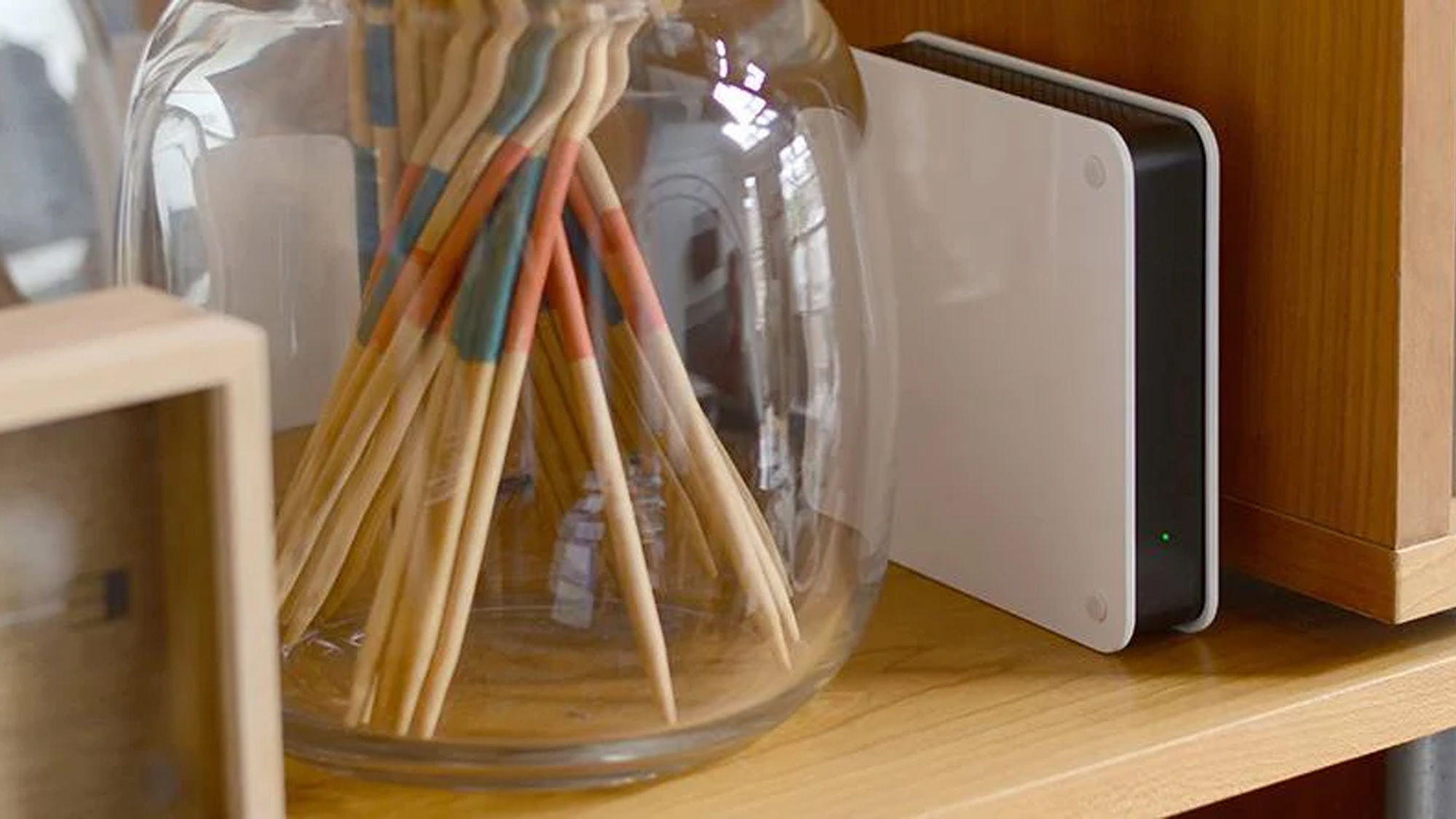
This Hub also includes a 4G LTE mode and battery that keeps the system connected and running in an Internet or power outage. You do need to subscribe to the monthly Always On or Always On+ service to use this backup connection, though, and the doorbell and indoor cameras won’t work if the Wi-Fi is down: the 4G connection only works to call emergency services.
All of the devices that the system uses are wireless, communicating using the ZigBee protocol. These devices include access sensors, motion sensors, video doorbells, indoor cameras, keypads, water sensors, and Carbon Monoxide and smoke alarms (the smart lock is one made by Yale). When we tested the system, the company had yet to release an outdoor camera, but as of June 2022, is planning to release an indoor/outdoor camera.
The available sensors all share the same clean, functional design as the hub, and are also available in black and white. The sensors are powered by tiny Lithium batteries: a single CR2 for smaller sensors like the access sensors and two CR123As for the larger ones like the door panel.
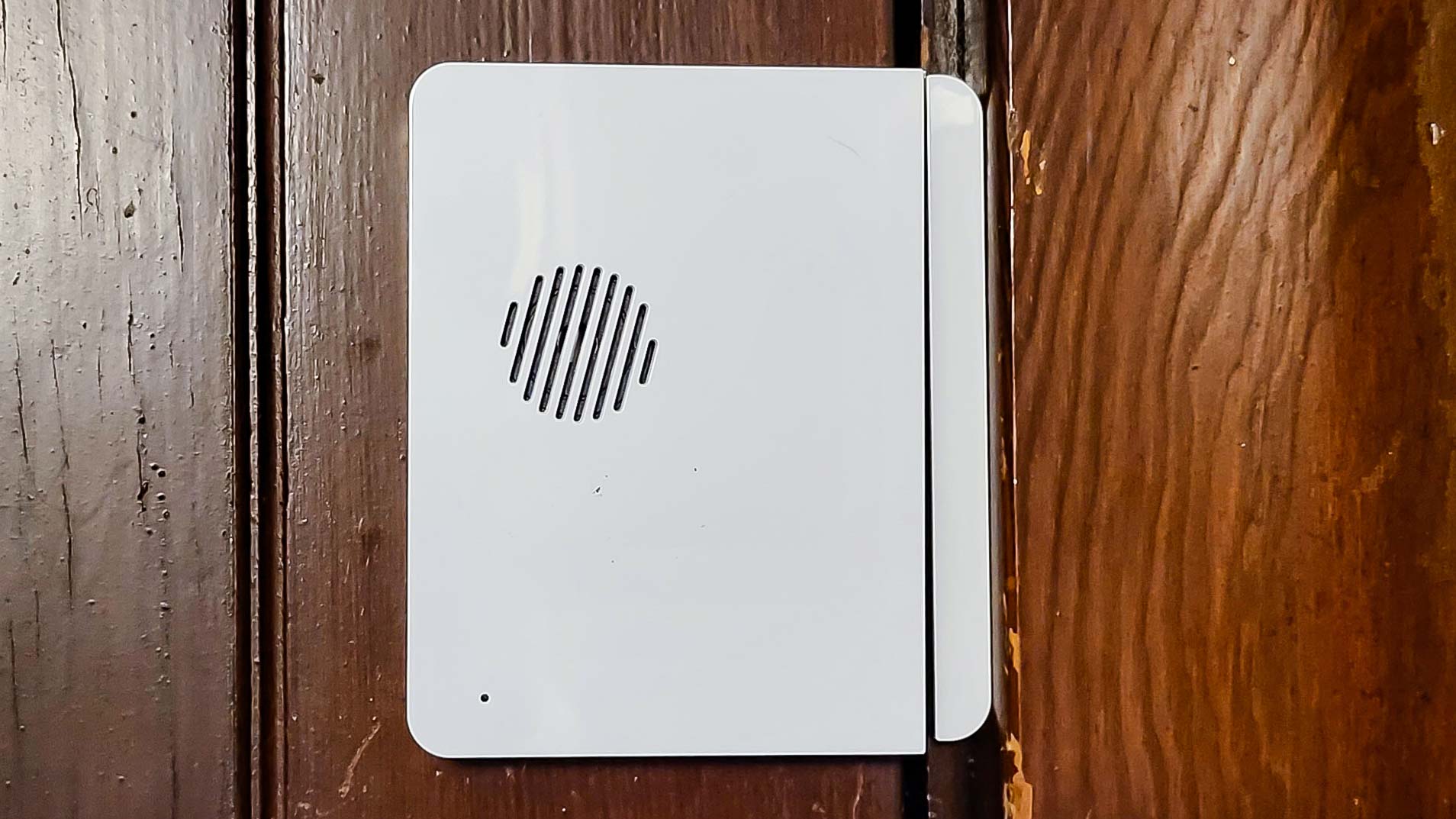
We were not able to test the battery life of the sensors, but Scout Alarm says that these should be good for between one and three years. The Hub also has a battery built-in that Scout claims will last for up to 12 hours in the event of a power outage. I found that this worked as designed: unplugging the power and the internet didn’t disarm the system. The only part that doesn’t work over the backup connection is the doorbell and indoor camera.
Scout Alarm Small Pack Alarm System review: Installation
The Scout system is a self-install system: you can do it all yourself. Because it is wireless, it mostly involves finding a good spot for the sensor, then sticking it to the wall or door frame with the included adhesive sticker. The app handles the integration of each sensor into the system: you select the device you are adding to the app, then remove a piece of plastic on the device itself to connect the battery and turn the sensor on. The hub then detects the new sensor, and you install and test it. For the access sensor, for instance, you open and close the door it is attached to and the hub beeps to show that the sensor change has been detected.
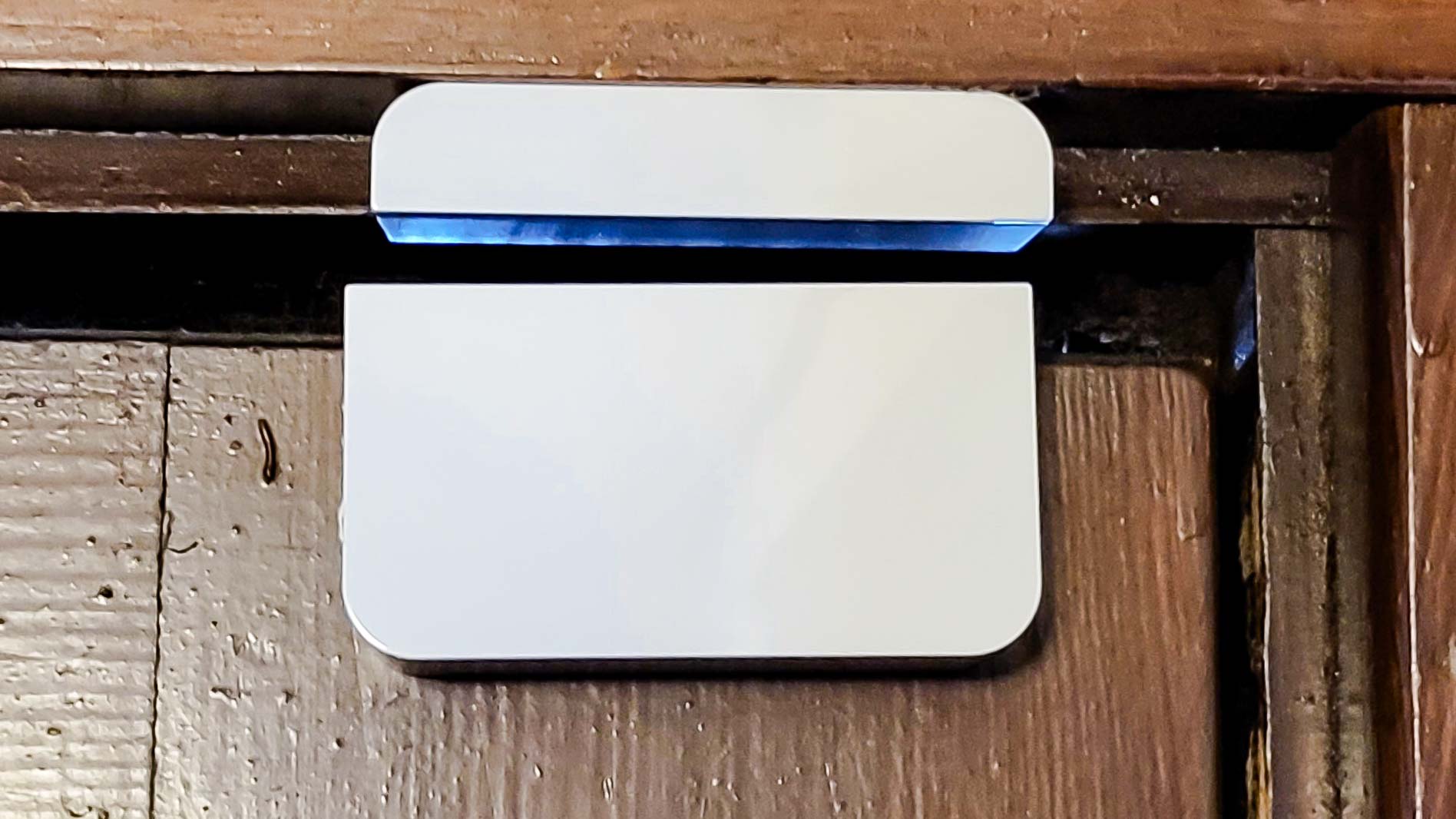
The app also shows the strength of the signal between the sensor and the hub, so you can make sure they can talk. All of the sensors I tested had no problems connecting between the front and back of my modest home, a distance of 30 to 40 feet in an urban area flooded with WiFi networks.
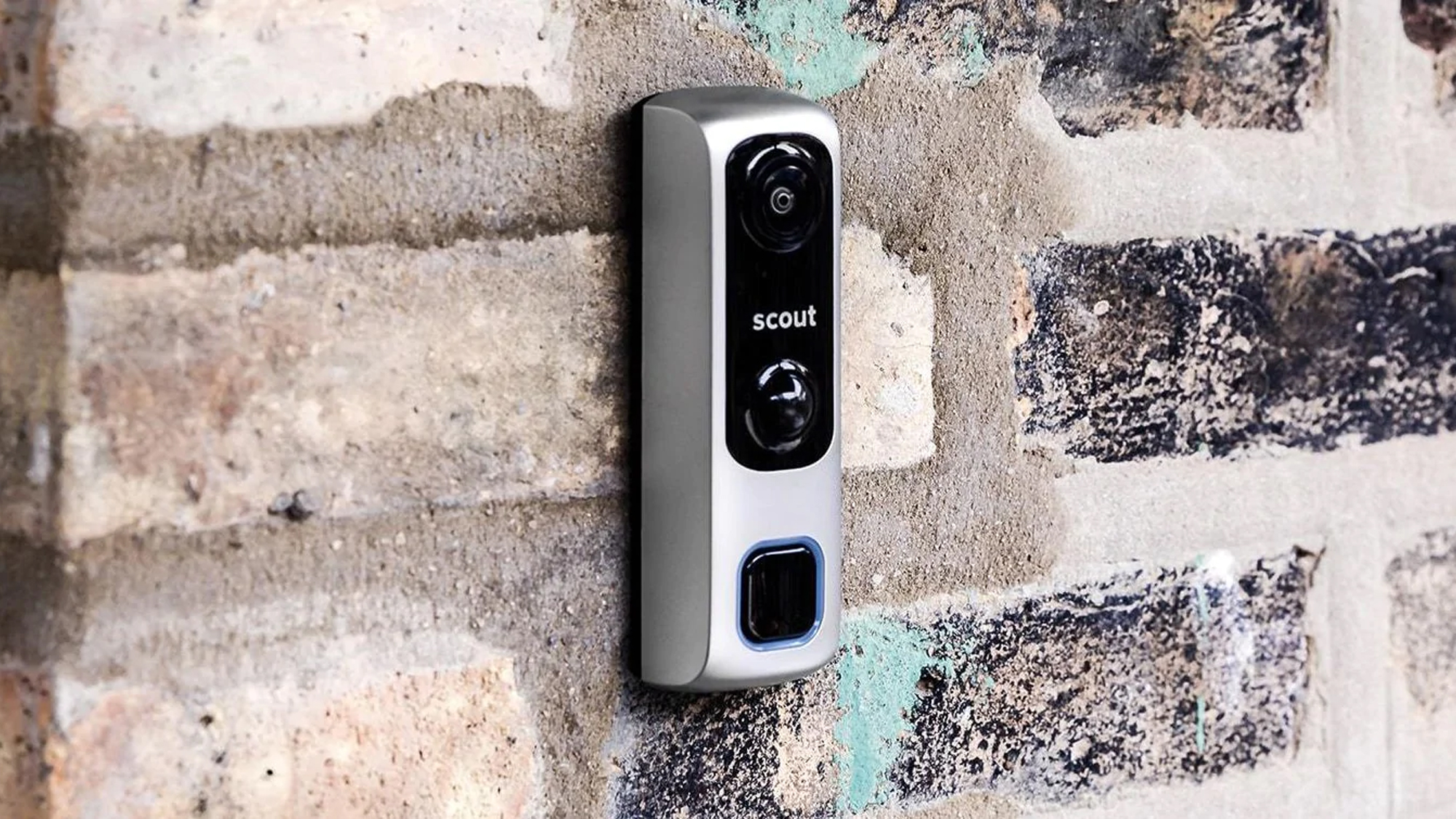
The Video doorbell requires a bit more work to install. First, unlike many of the best video doorbells which are battery-powered, you have to use an existing 19V AC doorbell transformer and convert it with the included power kit, a small black box that you install between the doorbell and the ringer. That isn’t difficult to do, as long as you are confident about which cable is which. It is the same type of connection that most video doorbells use, so it isn’t unusual in requiring a bit more wire cutting than the other sensors. Once the doorbell is powered up, you can add it to the app, although the process is a bit more complex than the other sensors, as you have to join the Wi-Fi network that the doorbell creates, then connect it to your own Wi-Fi network.

The system can be armed or disarmed with the included NFC tags as well as the app. Three are included: two keyring tags and a small stamp-sized tag that can be attached to something in your house, such as a remote control or a book. The idea is that if you lose your keys and need to turn the alarm off, you grab the object and use the NFC tag attached to it to disable the alarm.
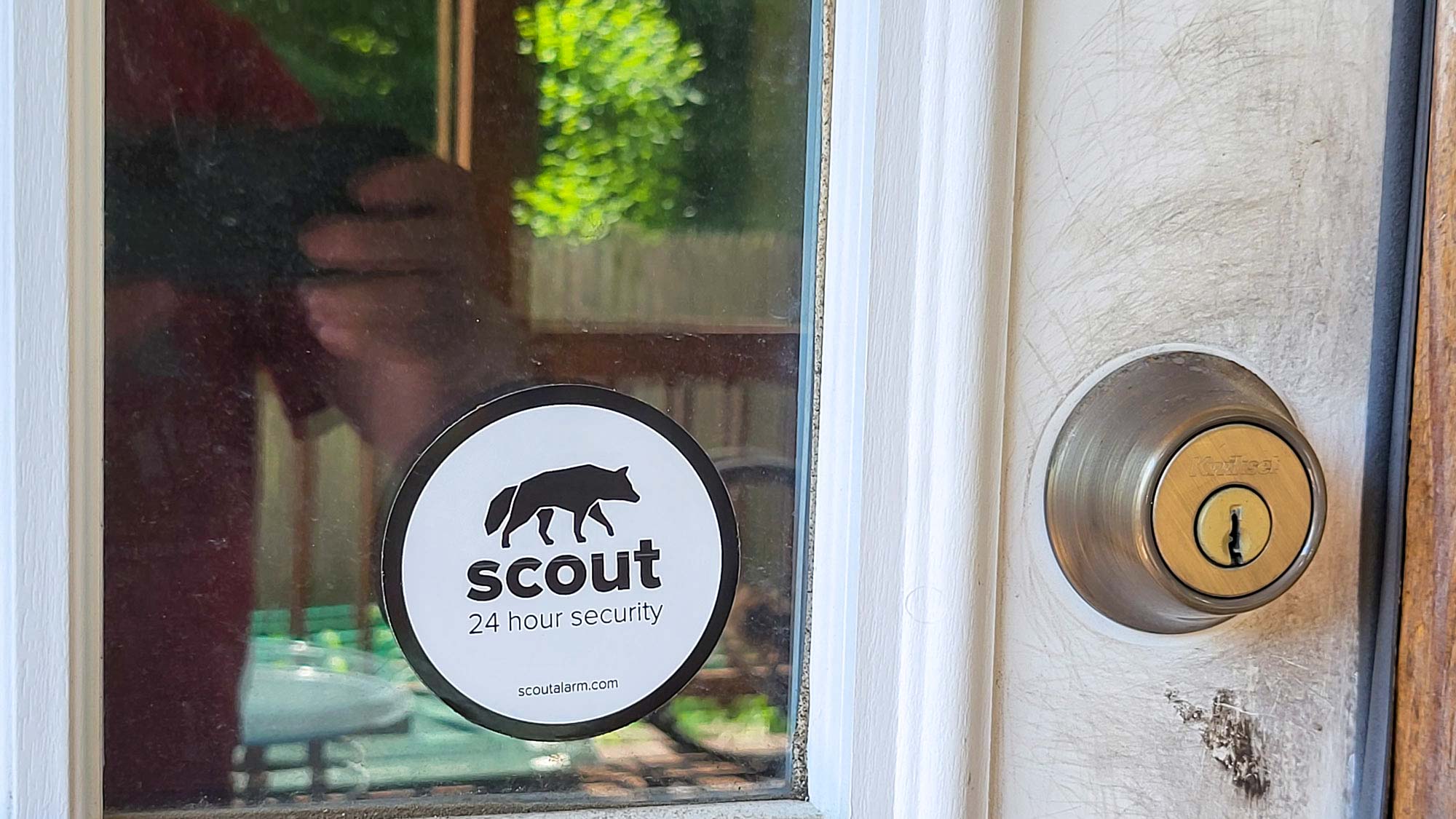
Scout claims that the system requires no annual contract, but that’s a little misleading. Without a service plan, the system is no more than a dumb alarm that you have to arm and disarm from the keypad: you don’t get access to the app, to remote arm and disarm, and to the video from the doorbell. What Scout Alarm really means is that you can switch between the two levels of service plan they offer at any time: going up to the monitored tier, for instance, if you are going to be away for a while then dropping back down to the cheaper option when you get home.
Scout Alarm Small Pack Alarm System review: Performance
The Scout Alarm system is a simple, easy-to-use alarm system that is straightforward to install. Its modular nature means that you can start out with the major parts and add more (such as glass break sensors, water detectors, etc) over time.
The system also integrates into your smart home, working with Amazon Alexa and Google Assistant. There is no support for Apple Homekit, though. It does also integrate with some other systems: you can use it to turn Hue lights on and off, control smart locks from Kwikset and Yale, or be triggered by First Alert carbon monoxide and smoke detectors. If you are of a technical mind, you can expand this to other systems using the support for IFTTT, which would allow you to trigger cameras, lights, thermostats, and other devices that support this widely used way to connect devices.
The video doorbell is fairly good, but the video it captures lacks the quality of Ring and other models. It is in 1080p resolution, but it looks a little soft and hard to distinguish details that might be important, such as faces and number plates. It also lacks the smart features of other models, such as the package and person recognition of Ring and Eufy doorbells.
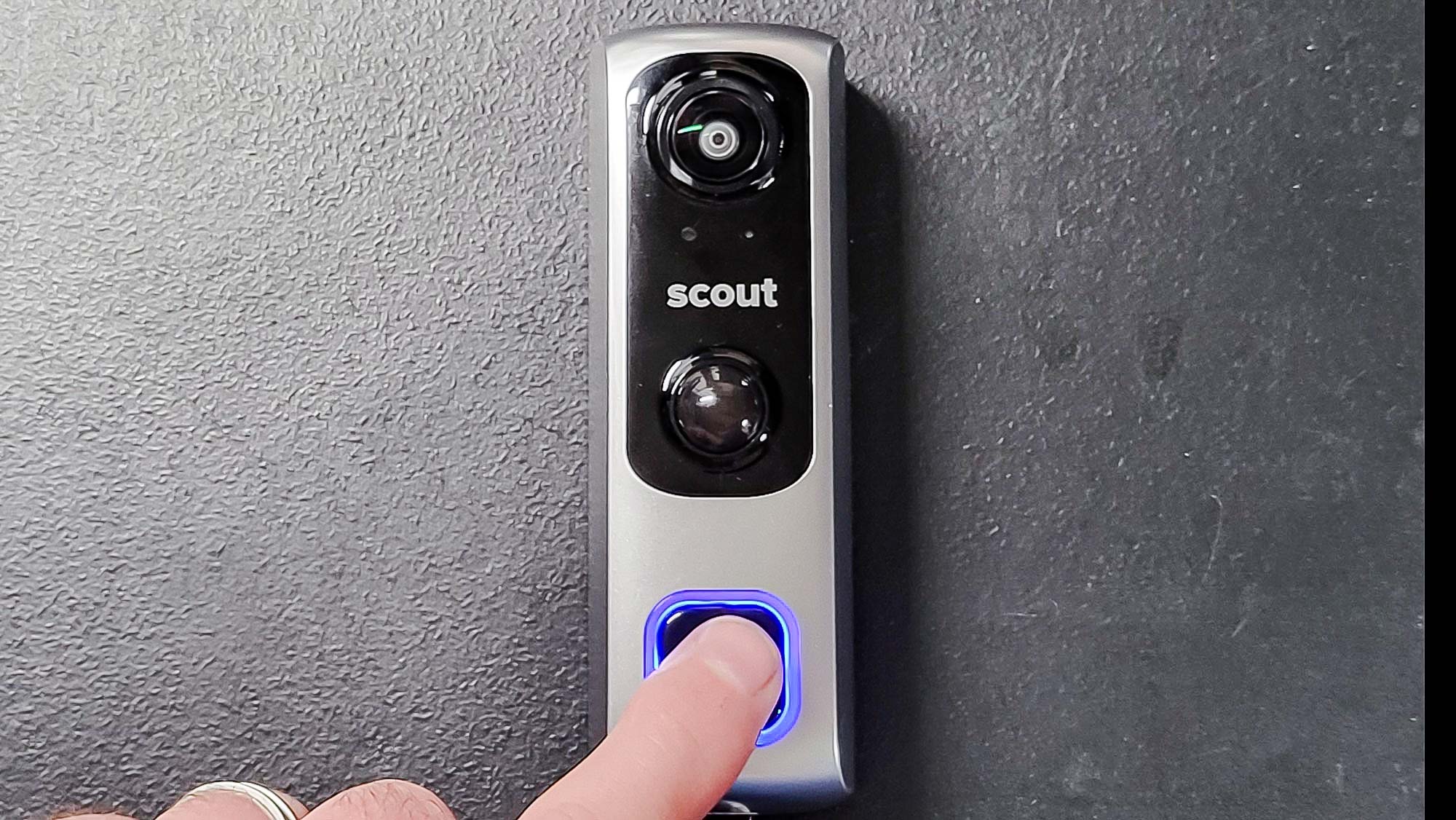
The built-in battery backup is a nice idea, but it only lasts about twelve hours. That is enough for the odd power glitch, but isn’t enough to rely on if you have frequent weather-related power outages.
Scout Alarm Small Pack Alarm System review: Verdict
The Scout Alarm system is simple to install and use, with a decent set of features and off-the-shelf components that can be easily added to the system over time. Its various components cover most of the things you would require in an alarm system: it offers door sensors, glass break sensors, water sensors, and an indoor camera.
However, when compared to some of the best DIY security systems, the fact that it does not yet have an outdoor camera limits its usefulness. We also wish the system would offer a bit more functionality without having to pay for a subscription. But, the Scout is off to a good start.
Richard Baguley has been working as a technology writer and journalist since 1993. As well as contributing to Tom's Guide, he writes for Cnet, T3, Wired and many other publications.
